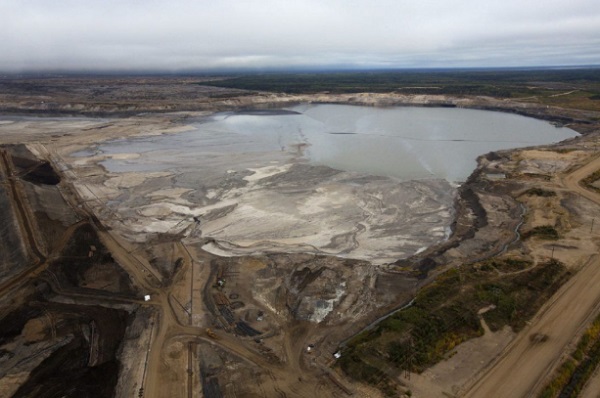Opinion
Election 2017, Advance Polls open this Saturday. North/South inequality a surprise to some but not all.

The big issue facing the candidates in a multitude of ways is the North/South inequality in regards to investment, education, recreation, youth, air quality to name but a few. Some show doubts but will let me know that I was right.
I found out that 31% of the population of Red Deer live north of the river. A number that is significant because in 1985 40% lived north of the river.
Years ago the north side residents voted for a slate of north side candidates. We have 8 councillors and 1 mayor so we should have 3 members from the north but for many years we have had only 1, Frank Wong.
31% of the residents represent only 17.6% of the candidates.
Candidates living north of the river are:
Mayor: Sean Burke,
Councillors: Jason Habuza, Kris Maciborsky, Vesna Higham, Frank Wong, Sandra Bergeron, Matt Chapin, Bobbi McCoy
Public School Board: Bev Manning, Matt Chapin
Separate School Board; No Name.
Now if none of these names draw your fancy you might consider Tanya Handley which supports building the Aquatic Centre north of 11A to kick start development.
Michael Dawe for acknowledging the issue and putting their plight into words.
I cannot give a true picture of all 51 candidates. If we were a big city and was broken into 4 wards it would be easier to know your candidates and they would be more aware of the issues.
I am always surprised when candidates and even local residents are amazed after being apprised of the following information. They are not secrets, they are widely known in national news stories, human interest articles and polls, and used in marketing tools by other cities and corporations.
Remember 31% of Red Deer’s residents live north of the river and they have the G.H.Dawe Community Centre developed in the 70s and built in the 80s.
Two thirds of Red Deer’s residents live south of the river and they have the Downtown Recreation Centre, Michener Aquatic Centre, Downtown Arena, Centrium, Collicutt Recreation Centre, Pidherney Curling Centre, Kinex Arena, Kinsmen Community Arenas, Red Deer Curling Centre, and the under-construction Gary W. Harris Centre. The city is also talking about replacing the downtown recreation centre with an expanded 50m pool. Tanya Handley says she will not support this as she thinks it should be built north of 11a.
North of 11a. Thousands of acres up for development, and a 100 acre lake.
I have been talking about Hazlett Lake. Red Deer’s largest lake, located north of the river, north of Hwy 11a because it is up for development. It is a diamond in the rough, with potential that is being ignored at our cost. Lethbridge turned a slough into a lake becoming Henderson Park, a tourist attraction and they were the 5th fastest growing city in Canada, and they are only slightly smaller than Red Deer now and could overtake Red Deer this year.
Red Deer has a lake that the current council wants to wrap with residential and industrial land. The city wants to spend a cool hundred million turning the downtown recreation centre into an aquatic centre. Why not build an Aquatic Centre on a lake? Highly visible from Hwy 2.
The Gary W. Harris centre will be visible from Hwy 2, as is the sports Hall of Fame, as is Hazlett Lake.
If Lethbridge can turn a slough into a tourist attraction why can’t Red Deer turn a lake into a tourist attraction.
Hazlett Lake is about the same distance from the Riverlands development as the Collicutt Centre is from the Riverlands.
The Collicutt Centre came about because the city decided that with 55,000 residents the city needed a 4th recreational centre. It also spurred development in the south east and now 60% of the residents use it.
The development north of 11a would bring the total population north of the river to 55,000 (if we stop the exodus of residents,) but there are no plans for a 2nd recreation centre let alone a 4th north of the river.
There is also no plan, no discussion to stem the outward migration in Red Deer. I sense that the bias against the north is so deep, so entrenched that they do not worry about it.
Lethbridge and Red Deer have similar size population in the same province. Lethbridge is the 5th fastest growing city in Canada and grew by almost 2% per year, while Red Deer shrank by 1% last year.
Lethbridge took a man made slough and turned it into a multi-faceted tourist attraction, while Red Deer will turn a lake into a residential subdivision.
So why I am I suggesting Lethbridge turned lead into gold and Red Deer might be turning gold into lead. Let us look at what Lethbridge did with a man-made slough then look at what Red Deer will do with a lake.
Henderson Lake Park Henderson Lake Park is one of Lethbridge’s premier parks featuring a 24 hectare (59 acre)man made lake, mature trees and groves, gardens, picnic shelters, playgrounds and over 7 km of trails.
Whether you’re a family with small children, an exercise or sports enthusiast, a non-motorized boating enthusiast, a fisherman, a horticulturists, or someone simply looking to get out for a walk this park is definitely for you.
The lake is perfect for kayaks, canoes and paddle boats alike and provides easy access to the water via the boat launch and dock. The dock is often used by fishermen looking to catch Pike, Perch or Whitefish (provincial fishing regulations apply).
For the nature, exercise, and history enthusiasts there is a 2.5 km trail around the lake and another 4.3 km trail around the perimeter of the park providing ample opportunity for one to stretch their legs, check out all of the local wildlife, or view the commemorative and historical markers and displays located throughout the park. There are also great little areas for you to put down a blanket and enjoy a good book, have a picnic or simply relax and watch the world as it goes by.
Henderson Park is also home to the Demonstration and Rose Gardens. The Rose Garden is located in the northwest corner of the park and commemorates 9/11. The Demonstration Gardens are located east of the Tennis Courts and celebrates the contributions of Communities in Bloom to the Community.
Henderson Park is surrounded by a multitude of facilities like the SLP Skate Park, Henderson Horseshoe Pits, the Henderson Lake Golf Course, the Henderson Outdoor Pool, Spitz Stadium, Henderson Park Ice Centre, Henderson Tennis Courts and Nikka Yuko Japanese Garden.
Henderson Park has something to offer absolutely everyone and there isn’t a day where you won’t see families, exercise enthusiasts, seniors, people out exercising their dogs, fishermen, boaters, golfers, and just about everyone else under the sun out enjoying this wonderful park. From the photographic opportunities to the areas for quiet solitude and reflection to the exuberant playgrounds, to the trail system that is linked to the rest of the south side, this park is sure to meet everyone’s needs.
Hazlett Lake Park?
Remember, Hazlett Lake is a natural lake that covers a surface area of 0.45 km2 (0.17 mi2), has an average depth of 3 meters (10 feet). Hazlett Lake has a total shore line of 4 kilometers (2 miles). It is 44 Ha. (108.8 acres) in size. Located in the north-west sector of Red Deer.
Currently on the NADG.com website we will see a residential community around Hazlett Lake. Encompassing about 12 percent of the land north of 11A currently up for development. Phase I will be home to 5,000 residents with the nearest high school on the other side of city on the east end. A K-8 school site to be located north-east of Hazlett Lake currently planned for a later phase.
On nadg.com:
“Hazlett Lake is a 350-acre master planned residential community located in North Red Deer at the intersection of Alberta’s busiest Highway -QE2 and Highway 11A. The community will consist of over 2000 new residential units and will be Phase 1 of Red Deer’s North of 11A Major Area Structural Plan. Additionally, this development will be the first new housing project in North Red Deer in 10 years”
Red Deer also wants to build an Aquatic Centre, and the current plan is to demolish the downtown rec centre and build it there. The Collicutt Centre was built in the south east corner of Red Deer, helped to kick start development. Why not build the Aquatic Centre in the north west corner, kick starting development and build it on Hazlett Lake and create a tourist industry?
An Aquatic Centre on a lake, ludicrous right? A tourist destination highly visible to one of the busiest highways in Canada, insane right? 2 miles of shoreline may have room for a beach, impossible right? The current plans in Red Deer indicates some trails, a small community building with some historical placards, possibly a bathroom and a playground.
Not quite Henderson Lake Park, tourist attraction, is it?
To me Red Deer has a gold mine of an opportunity that will be ignored at the expense of the citizens of Red Deer. Do you agree?
Johnstone Park, saw their planned school go to Inlewood. The city said the neighbourhood was not developed enough for a school, as compared to our new high school sitting in an empty neighbourhood.
Recently, the province stepped up and provided funding for the expansion on St. Patrick’s school in Highland Green, just north of the river. The school’s enrolment was 30% over capacity, a kindergarten class was being taught in a hallway, and students and families were paying the price.
There has not been a school built north of the river since 1985, perhaps that could explain why some schools are at 130% capacity and classes are held in hallways. There is no high schools north of the river, even though up to 40% of the population resided there. Could be why 777 more residents moved out of the north side and out of the city than moved into the area. Remember there are 4 high schools south of the river with 2 more planned. There are no high schools planned for the north side of the river even with thousands of acres north of 11a coming up for development and 25,000 more residents planned.
The Ministry of Education says they follow the direction of the local school boards.
What do the school board trustees, past and present have to say?
Public School Board incumbent and candidate, Dianne Macaulay had this to say;
“We have a variety of measures that can help the board determine growth in our schools. One is a system our district has been using for years call Baragard. This projects population demographics to help us determine possible new boundary’s when schools become full or when we are submitting our three year capital plan to the government for new schools needed. I can only answer your question regarding the building of schools.
The city is ultimately responsible for the placement of development including schools.
Some green spaces will have a sign indicating “This is a potential site of a public or separate school”. This can give people that are thinking about moving into that neighbourhood a heads up . But it doesn’t mean a school WILL be built.
Our latest school Don Campbell was needed but the government only gave us 3 month to determine a site. The city will not allow a school to be built unless the surrounding area is developed. So even thou a school may have been better off in another location , we only had sites on that end of the city that were currently developed
Lets talk about about the current high school project.
This was a massive joint project between Red Deer Public , Red Deer Catholic, the Francophone district and the city. The original plan was to build a joint use high school for all 3 boards. This would be a one of kind in Alberta and a large amount of space was needed for this so the city choose where it had the most to give at the time. Over 14 months of planning went into this and in the end the Bishop vetoed it because Alberta Catholic School Trustee Associations Convenant indicating their belief in how having Catholic and non catholic students together will take away from their Catholic teachings.
So now we have this huge area where will just be 2 or 3 different buildings. This has not saved tax payers one cent! I guess to sum up Garfield , we do look at the population growth and we try to build where the students will be. But sometimes our hands are tied.”
Angela Sommers, a Public School Board candidate says one of the biggest issues is the north/south inequality across schools, “just being north of the river, you can see there’s very little money for the students in the north.” Red Deer Advocate September 28 2017.
Advance polls open on Saturday, September 30, so I am offering you something to remember.
Bruce Dowbiggin
What Connor Should Say To Oilers: It’s Not You. It’s Me.

This just in. Connor McDavid is on track to be the greatest hockey player ever. Apologies to the Gretz/ Orr/ Howe partisans. But if he stays healthy and gets the hell out of Edmonton he will be hands-down the best ever. He is equal measures of Gretzky’s intuitive genius, Orr’s 200-foot impact. Howe’s sandpaper attitude. It’s an honour to watch him.
We know, we know, if he is so great why couldn’t he get the Oilers over the hump, particularly the past two seasons against Florida? Gretz, Orr, Howe all won Stanley Cups while leading their teams. So did Mario Lemieux. Fair point. But Howe in his prime never played more than two series in the postseason. Orr often played just three. Gretz teams often bagelled opponents for years.
McDavid’s teams the last two years have had lengthy paths to tred. Just getting to a Final is a huge accomplishment. Repeating that feat (going seven then six games) in the Final is humungous. It’s exhausting, mentally and physically. That’s why so few teams do it.
Still, that’s not the point. We have been asking since 2018 how long McDavid will hobble his legacy by staying in Edmonton. Those early columns were talking about a team that missed playoffs or did a Maple Leafs fold early on. The current iteration of the Oilers has gotten to the brink. They have players who’ve been around a while. And fell short.

Now the Oilers are an old team, the oldest in the regular season, the oldest team in the playoffs this year. Teams carrying more than two plus-30 players have a miserable track record of winning Cups. And the Oilers have zero Grade A prospects in the pipeline. At 28, McDavid is a young guy on their roster. Not good.
As the hockey world knows he can sign an extension on July 1 to follow the contract he has now. Money will be no object as the NHL salary cap (finally) goes up. Term will be forever if he wants it. His running mate Leon Draisaitl is tied up till age 36. The Oilers desperately want him to stay after the Gretzky fiasco in 1988. So what is he going to do? He’s got national endorsements in Canada, but in the U.S.? Connor who? The sky is the limit.
Oilers fans palpitating over the future of their star were looking for hints as to his mindset when he met the media following the Oilers loss in six games to Florida. It was a chance for him to say he’s staying, he loves the place, his wife is committed to freezing every winter in the Alberta capital. He could have cried and said “Mess told me not to do that”.
What they got was a lot of maybe. Yes, he kept the doors open, but he said he needs time to see the landscape till the clock tolls on July 1. He needs to examine whether this veteran team has a future. Because in a few years they’ll be like Howe’s Detroit teams in the 60s, a played-out dynasty.
Under NHL rules no team can contact him about signing. But he will know that everyone will want him at a max deal. Some will offer no state income tax. Some will have teams on the cusp of the Cup he desires (see Matthew Tkachuk to Florida in 2023). Some will be giant U.S. media cities with the ability to make him what Gretzky became in L.A. Some will offer warm weather and anonymity away from the rink.
These are all knowns. For the impatient, teams can approach the Oilers now about a trade. So he’s holding all the cards. It’s prom night and he gets his pick. Unless Edmonton (gulp) jumps the gun on a trade.

Let’s play Peter Pocklington for a minute here and see this from the Oilers’ POV. Pocklington traded Gretzky, because Peter was broke. That’s not Darryl Katz’s problem. His problem is his team is about to get ancient. There is no McDavid for Draisaitl on the horizon. Plus, you’ve tied up several players (Nurse, Nugent Hopkins) to contracts they can’t hope to play up to. And youngish players coming into free agency.
He must address the other side of the 1988 Gretzky equation. How to get full market value for a superstar? Which means getting another star to help Draisaitl going forward. You could let the two play out the string together in Edmonton, of course. But with so many strong teams in Colorado, Vegas, Dallas, even Winnipeg that would be a hard slog. And by the time you realized that it would be too late.
The smart play, as Michael Corleone would say, is move fast. Trade McDavid before the start of next season for a boatload of young players to supplement Draisaitl. Take a short-term PR hit but live to compete another day.
Of course, Katz is not going to trade McDavid. He’s a fanboy owner. He’ll throw the Rexall kitchen sink at him and hope that’s enough. McDavid will be patient (if he’s smart). The “will-he-sign?” drama will bleed into the next season, a millstone for the team. The distractions will mount before Edmonton realizes that an unsigned McDavid is a liability. And Connor on a max deal with a minus team is no bargain either.
Remember the re-structured Oilers won a Cup in 1990 using Mark Messier and the players they got for Gretzky. Think about it, Edmonton.
Bruce Dowbiggin @dowbboy is the editor of Not The Public Broadcaster A two-time winner of the Gemini Award as Canada’s top television sports broadcaster, his new book Deal With It: The Trades That Stunned The NHL And Changed hockey is now available on Amazon. Inexact Science: The Six Most Compelling Draft Years In NHL History, his previous book with his son Evan, was voted the seventh-best professional hockey book of all time by bookauthority.org . His 2004 book Money Players was voted sixth best on the same list, and is available via brucedowbigginbooks.ca.
Business
Federal fiscal anchor gives appearance of prudence, fails to back it up

From the Fraser Institute
By Jake Fuss and Grady Munro
The Parliamentary Budget Officer (PBO)—which acts as the federal fiscal watchdog—released a new report highlighting concerns with the Carney government’s fiscal plan. Key among these concerns is the fact that the government’s promise to balance its “operating budget” does not actually ensure the nation’s finances are sustainable. Instead, the plan to balance the operating budget by 2028/29 gives the appearance of fiscal prudence, but allows the government to continue running large deficits and borrow more money.
First, what’s the new government’s fiscal plan?
While the Carney government has chosen to delay releasing a budget until the fall—leaving Canadians and parliamentarians in the dark about the state of government finances and where we’re headed—the Liberal platform and throne speech lay out the plan in broad strokes.
The Carney government plans to introduce a new framework that splits federal spending into two separate budgets: The operating budget and the capital budget. The operating budget will include “day-to-day” spending (e.g. government salaries, cash transfers to provinces and individuals, etc.) while the capital budget will include spending on “anything that builds an asset.” Within this framework, the government has set itself an objective—also called a ‘fiscal anchor’—to balance the operating budget over the next three years.
Fiscal anchors help guide policy on government spending, taxes and borrowing, and are intended to prevent government finances from deteriorating while ensuring that debt is sustainable for future generations. The previous federal government made a habit of violating its own fiscal anchors—to the detriment of national finances—but the Carney government has promised a “very different approach” to fiscal policy.
The PBO’s new report highlights two critical concerns with this new approach to finances. First, the federal government has not yet defined what “operating” spending is and what “capital” spending is. Therefore, it’s difficult to know whether any new spending policies—such as the recently announced increase in defence spending—will hurt efforts to achieve the government’s goal of balancing the operating budget and how much overall debt will be accumulated. In other words, the government’s plan to split the budget in two simply muddies the waters and makes it harder to evaluate federal finances.
The PBO’s second, and more alarming, concern is that even if the government achieves its goal to balance the operating budget, federal finances may still continue to deteriorate and debt may rise at an unsustainable rate (growing faster than the economy).
While the Liberal election platform does outline a fiscal path that appears to balance the operating budget by 2028/29, this path also includes higher deficits and more borrowing than the previous government’s plan once you factor in capital spending. Specifically, the Carney government plans to run overall deficits over the next four years that are a combined $93.4 billion more than was previously planned in last year’s fall economic statement. This means that rather than the “very different approach” that Canadians have been promised, the Carney government may continue (or even worsen) the same costly habits of endless borrowing and rising debt.
The PBO is right to call out the major transparency issues with the Carney government’s new budget framework and fiscal anchor. While the devil will be in the details of the government’s fiscal plan, and we won’t know those details until it releases a budget, the government’s new fiscal anchor gives the appearance of prudence without the substance to back it up.
-

 Alberta1 day ago
Alberta1 day agoCalls for a new pipeline to the coast are only getting louder
-

 Alberta1 day ago
Alberta1 day agoAlberta pro-life group says health officials admit many babies are left to die after failed abortions
-
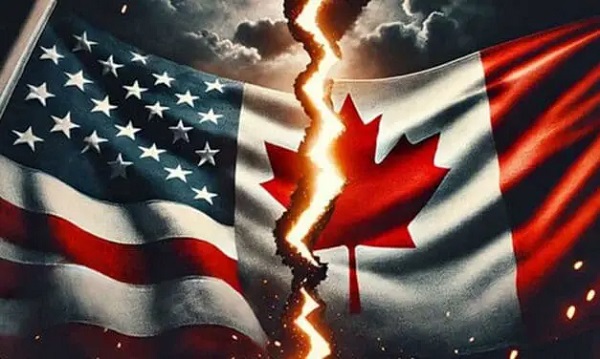
 Business1 day ago
Business1 day agoCanada’s economic pain could be a blessing in disguise
-
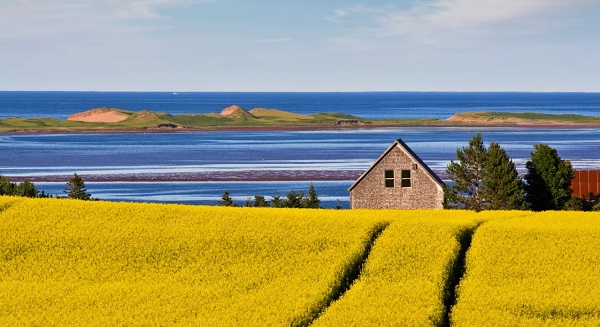
 espionage1 day ago
espionage1 day agoFrom Sidewinder to P.E.I.: Are Canada’s Political Elites Benefiting from Beijing’s Real Estate Reach?
-

 Business1 day ago
Business1 day agoRhetoric—not evidence—continues to dominate climate debate and policy
-
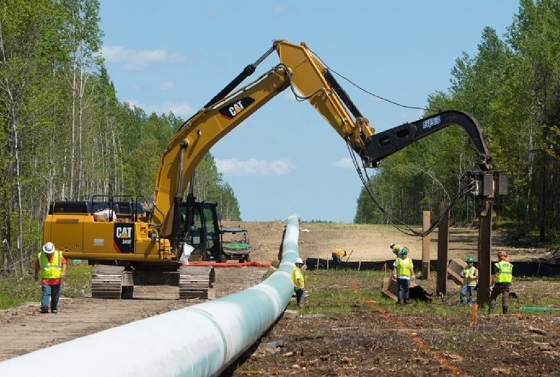
 Energy1 day ago
Energy1 day agoEnergy Policies Based on Reality, Not Ideology, are Needed to Attract Canadian ‘Superpower’ Level Investment – Ron Wallace
-
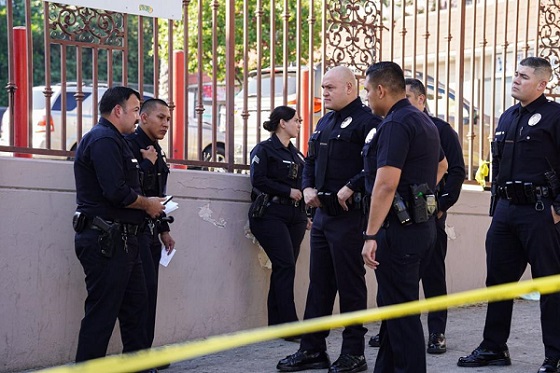
 conflict1 day ago
conflict1 day agoU.S. cities on high alert after U.S. bombs Iran
-
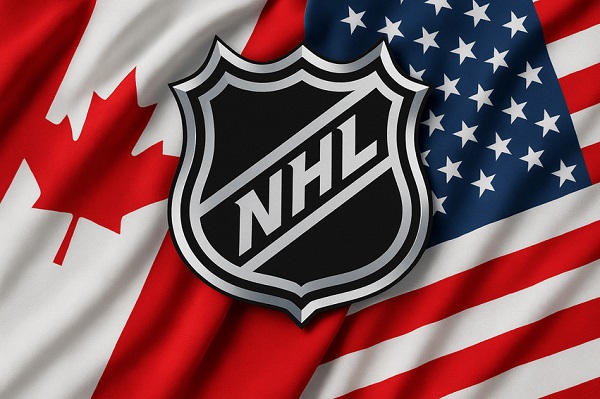
 Business1 day ago
Business1 day agoHigh Taxes Hobble Canadian NHL Teams In Race For Top Players



